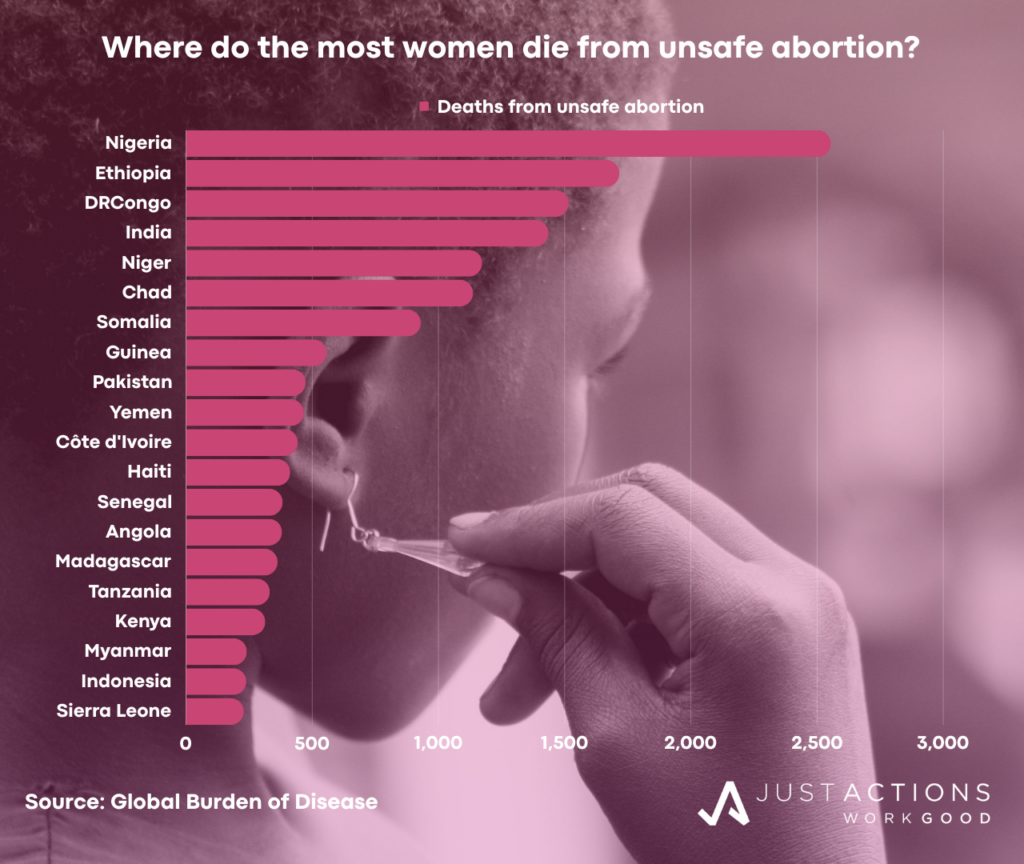Abortion: why the world needs to have a new conversation
You’re about to read something unusual. An article on abortion without controversy, political statements, or hyperbole from either end of the political spectrum. Just the facts – ten of them – courtesy of new reports by a distinguished medical journal, The Lancet, a thinktank – the Guttmacher Institute – and rarely cited data from the superb Global Burden of Disease (GBD).
#1. Globally, an estimated 73 million abortions occurred in 2019 – 29% of 250 million unplanned pregnancies – including 25 million in East and Southeast Asia, 24 million in Central and South Asia, 8 million in Sub-Saharan Africa, 7 million in West Asia and North Africa, 5 million in Latin America, and 4 million in Europe and North America, according to Bearak et al, Lancet 2020.
#2. There are 39 abortions per 1,000 women aged 15 to 49, but the rate is higher in West Asia and North Africa (53), Central and South Asia (46), and East and Southeast Asia (43); and lower in Oceania (34), Sub-Saharan Africa (33), Latin America (32), and Europe/Northern America (17). While abortion rates are falling in higher income regions, they are static or rising in lower income regions, especially across Sub-Saharan Africa, according to Bearak et al, Lancet 2020.
#3. The proportion of unintended pregnancies ending in abortion also varies widely, from 74% in East and Southeast Asia to 37% in Sub-Saharan Africa. The global average is 61%, according to Bearak et al, Lancet 2020.
#4. Half of all 21 million pregnancies among adolescent girls aged 15 to 19 living in low- and middle-income countries are unplanned, with more than half of unplanned pregnancies ending in abortion. Adolescents are more likely to resort to unsafe abortions and delay seeking medical care, according to Guttmacher, 2019.
#5. The rate of abortion in countries where it is illegal (40%) is the same as in countries where abortion is prohibited (40%), indicating that legal restrictions are not an effective way to reduce abortion rates, according to Bearak et al, Lancet 2020.
#6. Death from abortion is a leading cause of death in pregnancy and childbirth, claiming an estimated 19,560, or 10%, of 196,500 maternal deaths, according to the Global Burden of Disease 2019.
#7. More than half of all deaths from abortion occur in ten countries including in Nigeria (2,600), Ethiopia (1,700), Democratic Republic of Congo (1,500), India (1,400), Niger (1,200), Somalia (900), Yemen (500), Côte d’Ivoire (400), Angola (400), and Madagascar (400), according to the Global Burden of Disease 2019.
#8. Meeting all unmet need for modern contraception would avert 46 million abortions and 70,000 fewer maternal deaths each year, according to Guttmacher, 2019.
#9. New technologies are making abortion safer and more accessible, including self-managed abortions at home using misoprostol or the combined regimen of misoprostol plus mifepristone. For women with pregnancies of less than nine weeks’ gestation, both regimens are just as safe and effective as medication abortion in clinical settings, according to Moseson et al, 2022.
#10. These findings support the use of remote self-managed models of early abortion care, as well as telemedicine, in settings where women face high barriers to accessing safe abortion and where the needs for abortion are high due to high rates of unmet need for modern contraception, high rates of sexual and/or intimate partner violence, female poverty, and other factors increasing the risk of unplanned pregnancies for women and girls.
ABORTION CANNOT BE LEFT OUT OF THE GLOBAL MATERNAL HEALTH AGENDA
Here’s an important takeout from this data. The high death toll from unsafe abortion means that the world cannot achieve the global goal to reduce maternal mortality without specifically targeting safe abortion. This goal – called Sustainable Development Goal 3.1 – requires that the every nation reduces deaths in pregnancy and childbirth to 70 for every 100,000 births (the current ratio is 223). All 193 governments have already signed up to achieve this by 2030.
This is why the world needs to have a new conversation about abortion. There is certainly no lack of appropriate platforms. The powerful maternal survival, growing contraception, and emerging youth empowerment movements all have a stake in reducing demand for, and deaths from, abortion. But none more than the movement to end maternal deaths.
All of the committed individuals and organizations who are responsible for delivering on this promise to women need to ask themselves the question: How can an effective strategy to end deaths in pregnancy and childbirth by 2030 exclude a leading cause of maternal death?
Updated January 2024



